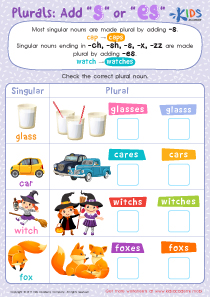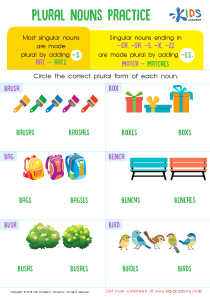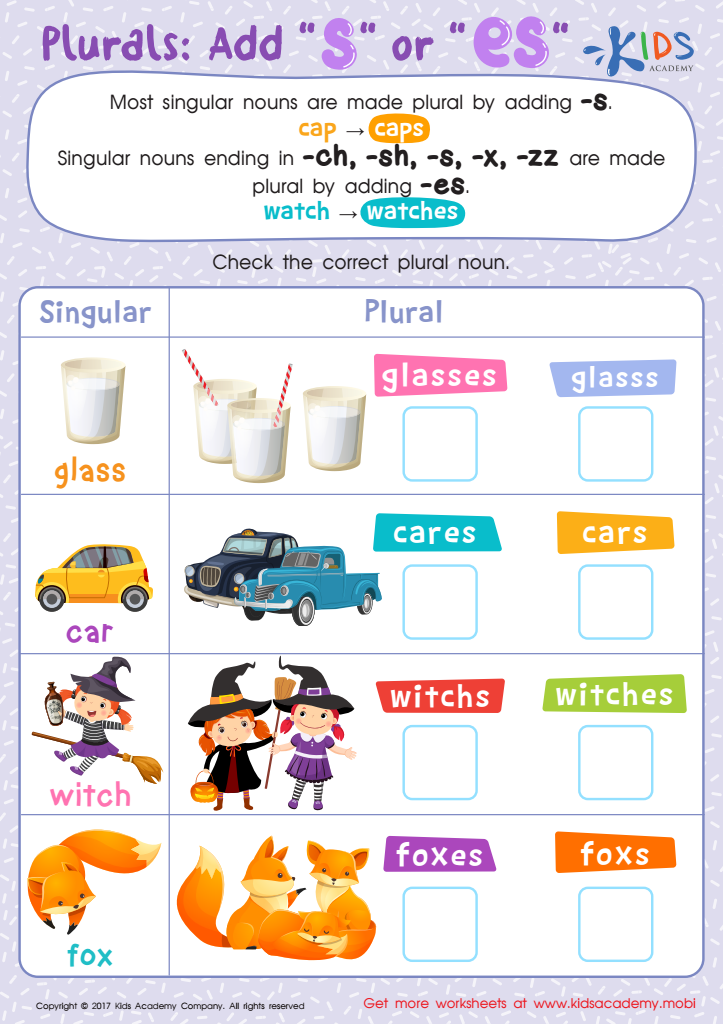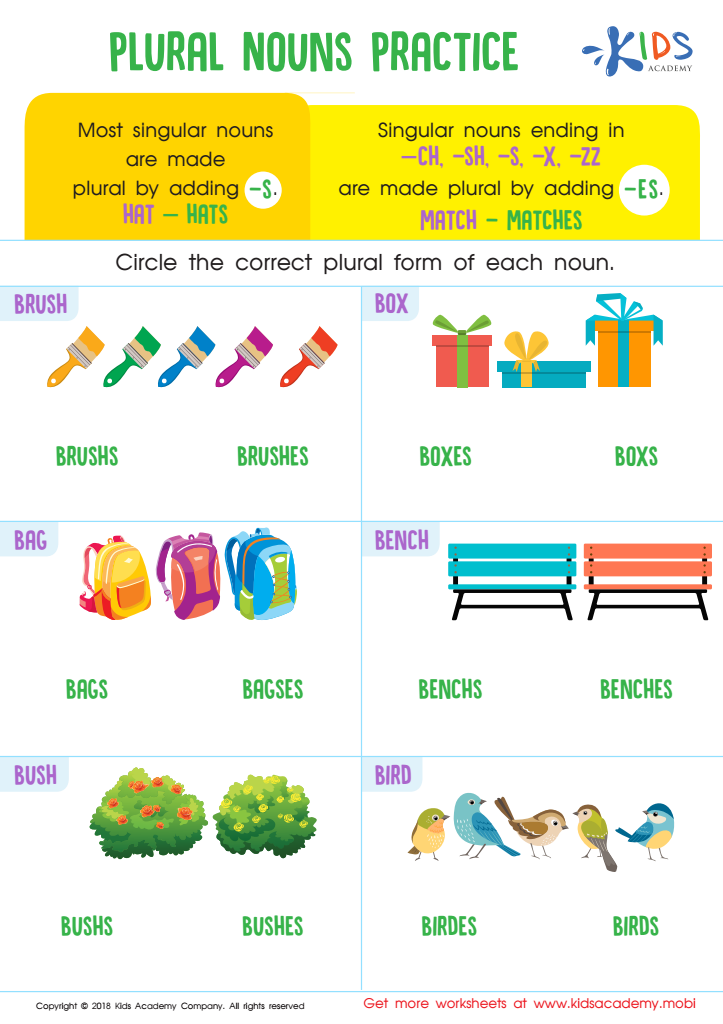Read Words with S and ES at the End - Lesson for Grade 1, Chapter - Inflectional Endings
In the lesson "Read Words with S and ES at the End," Grade 1 students will embark on a phonics journey through the Chapter on Inflectional Endings, specifically focusing on how to correctly use and understand the significance of "s" and "es" in forming plurals. This lesson is a fundamental building block in developing reading and writing skills, as it introduces students to the concept of singular and plural nouns, a key element in sentence structure and grammar.
Through engaging activities such as the "Plurals: '-s' or '-es'?" Worksheet and the "Plural Nouns Practice Worksheet," students will learn to identify when to add "s" or "es" to make a noun plural, based on the sounds at the end of the word. This skill is crucial for reading comprehension and vocabulary development, as it helps students recognize and understand the difference between singular and plural nouns in texts they read. Moreover, mastering this concept will enhance their ability to express themselves clearly and accurately in writing, contributing to their overall communication skills. This lesson not only lays an essential foundation for their English language education but also nurtures a deeper appreciation and understanding of language mechanics.


-
Activity 1 / Plurals: "–es" or "–es"? Worksheet
Learning singular and plural nouns can be a tough task for early readers, but when the wrong ending is used, it can sometimes look strange or even change the word into another one entirely! Use this vividly illustrated worksheet to show kids just how words would look if we use the wrong ending. To complete, read each word and view the cute images to see the singular versus the plural spellings. Check the version that uses the correct ending and review why the other ending can’t possibly be used!
-
Activity 2 / Plural Nouns Practice Worksheet
Knowing what nouns are is one thing; now your child must also learn all about the plural forms of nouns and the rules that guide them. First, explain to your child that most singular nouns are made plural by adding «-s» to the end of the word. For example, the plural of the word «cat» is «cats». Next, tell your kids that when singular words end in «-ch, -sh, -s, -x, -zz», the words are made plural by adding «-es». For example, the plural of «buzz» is «buzzes». This worksheet requires that your child circle the correct plural form of each noun.



